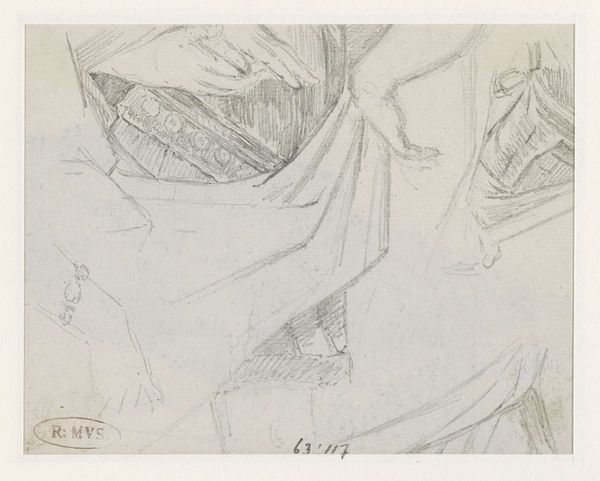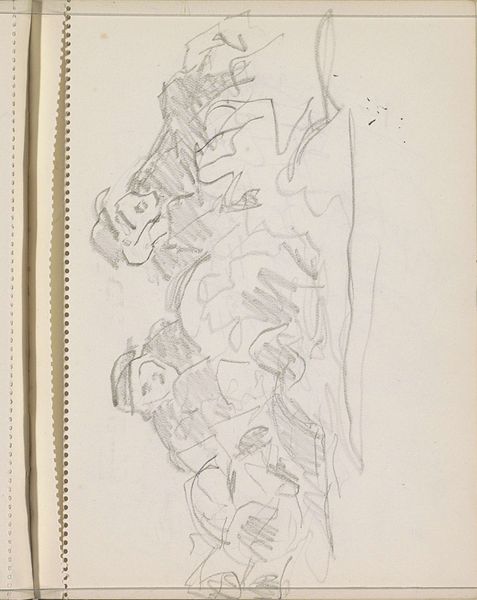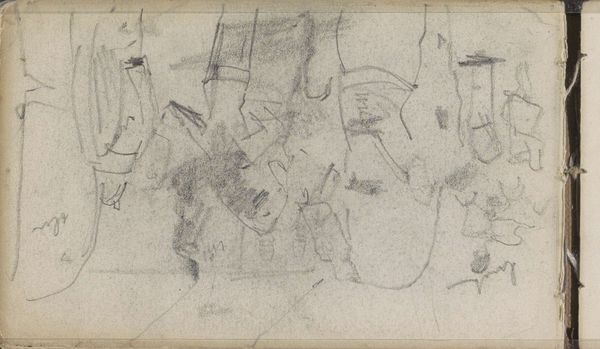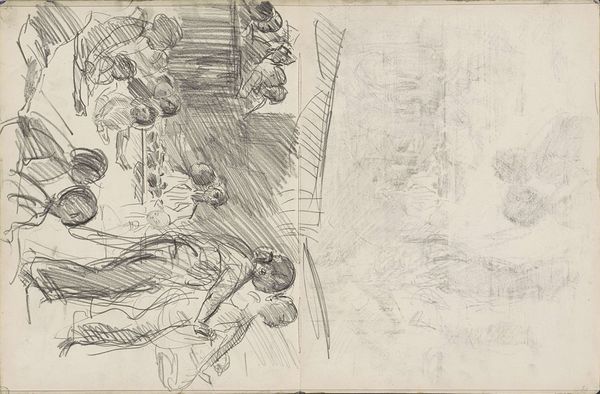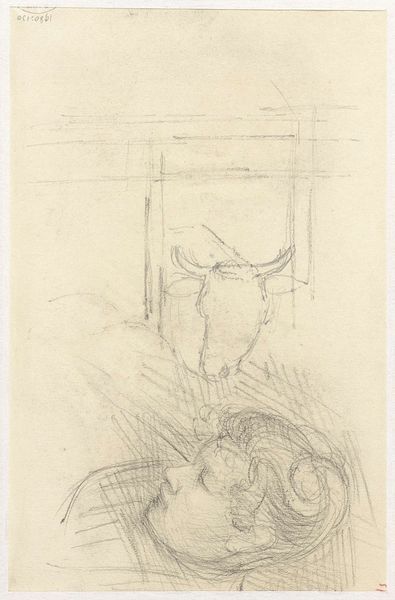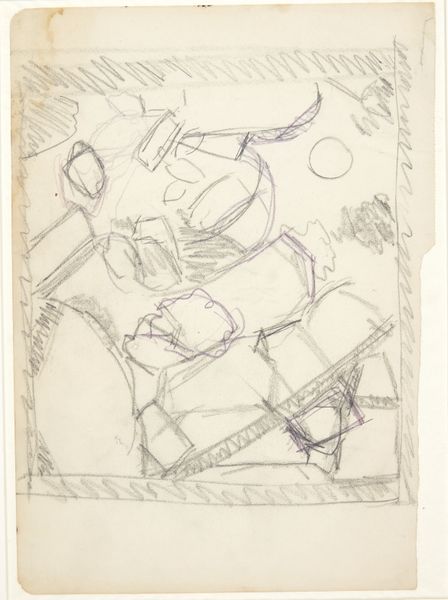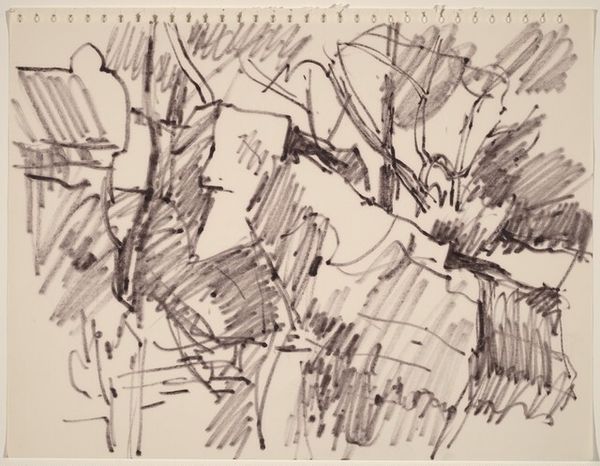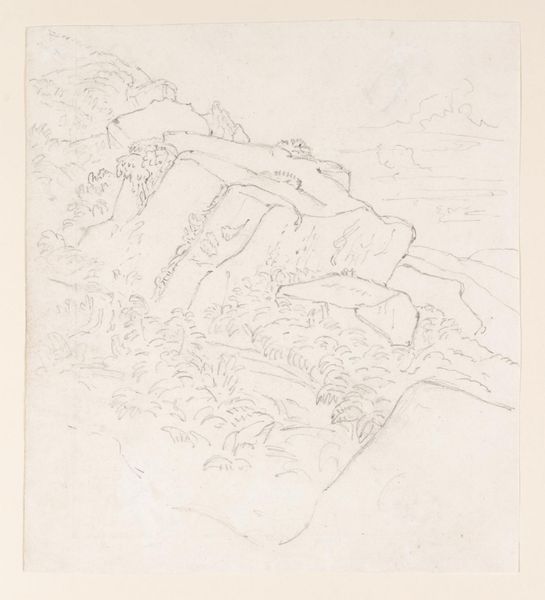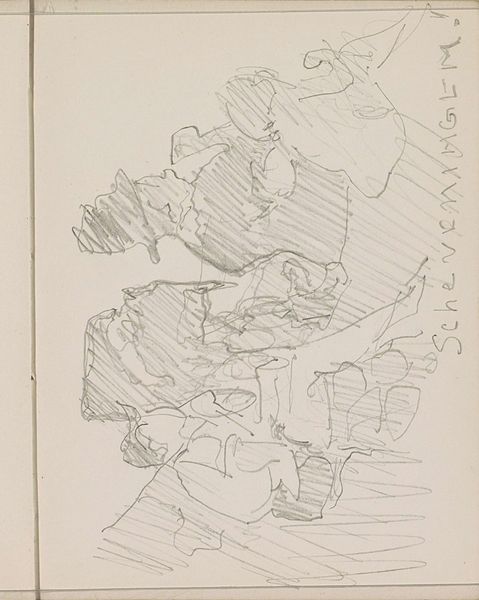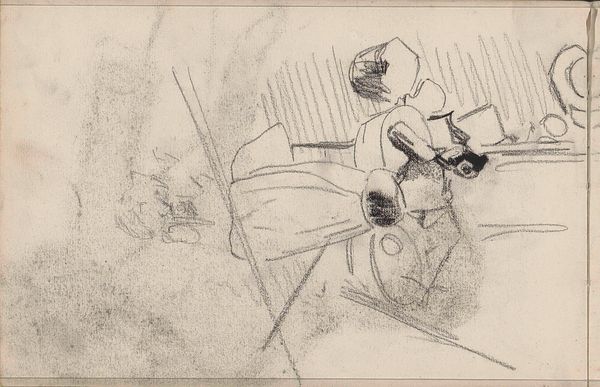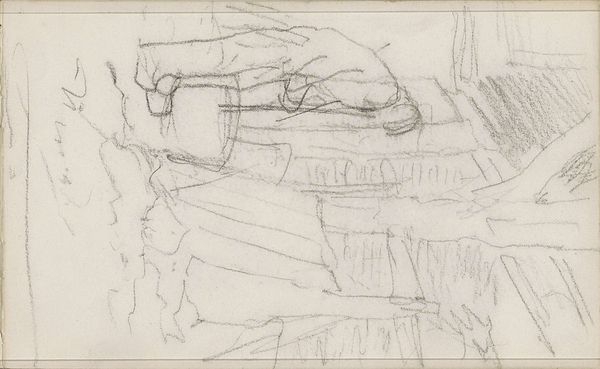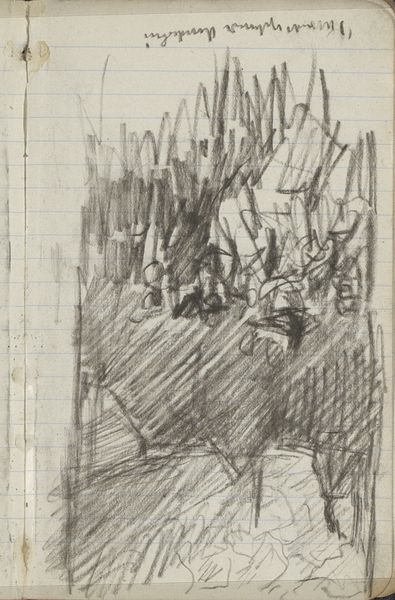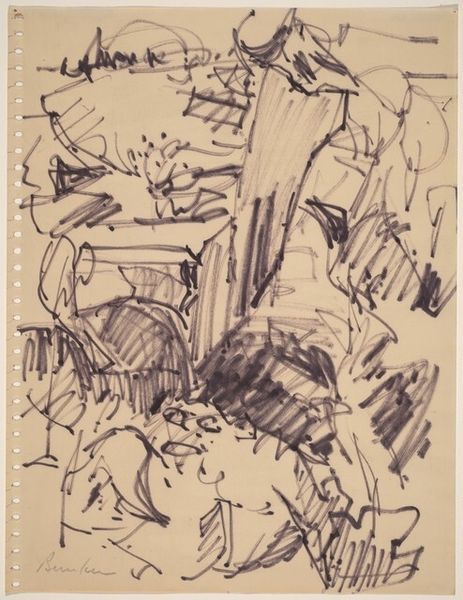
Dimensions: height 259 mm, width 144 mm
Copyright: Rijks Museum: Open Domain
Curator: "Rotshelling in de Bodenthal, de Harz"—or "Rocky Slope in the Bodenthal, the Harz"—a pencil drawing located right here at the Rijksmuseum. It dates from sometime between 1864 and 1936 and is credited to Jan van Essen. Editor: My first thought is about its intense sense of texture. You can almost feel the roughness of the rocks and the fragile delicacy of the distant trees through the variation in pencil strokes. Curator: The artist's focus here strikes me. He zeros in on a particular rocky configuration, imbuing it, perhaps, with a sense of primeval grandeur. Rocks, of course, are a loaded symbol—strength, resilience, and also the slow passage of time. We might see in them also the "ruins" that fascinate Romantics... the rocks hinting at processes older than any buildings. Editor: Yes, it's quite powerful, isn't it? The composition, too—it's interesting how the artist has led our eyes. We start at these sharply defined rocks in the foreground. And then it is directed upwards towards a hazier background. It is as though we’re following a path. Curator: Indeed! Notice how he juxtaposes the solidity of the rock face with those light touches evoking foliage? There's a dance between permanence and the ephemeral there—between mineral earth and the breath of the forest. Van Essen uses line to suggest not just shape, but weight, the geological pressures forming these masses. Editor: And what of the Bodenthal itself, and the Harz mountains? What did these locations signify culturally at the time the drawing was made? Curator: Ah, well, during that era, the Harz mountains represented a particularly charged place, almost mythic— a wild and untamed space at the very heart of Germany. A repository of folklore, imbued with legends and, to many, a deeply emotional and spiritual significance. The Bodenthal was likely chosen because of the valley’s particular rugged beauty. By showing us the rocky slope, Van Essen almost suggests that nature itself contains profound stories, legible to those who look closely. Editor: It is really fascinating. I started out thinking about the aesthetic quality of lines. But I think I am starting to look through the rendering of the rocks and thinking about history! Curator: Exactly! It just demonstrates how a simple landscape sketch can contain so much layered meaning when we truly look.
Comments
No comments
Be the first to comment and join the conversation on the ultimate creative platform.
